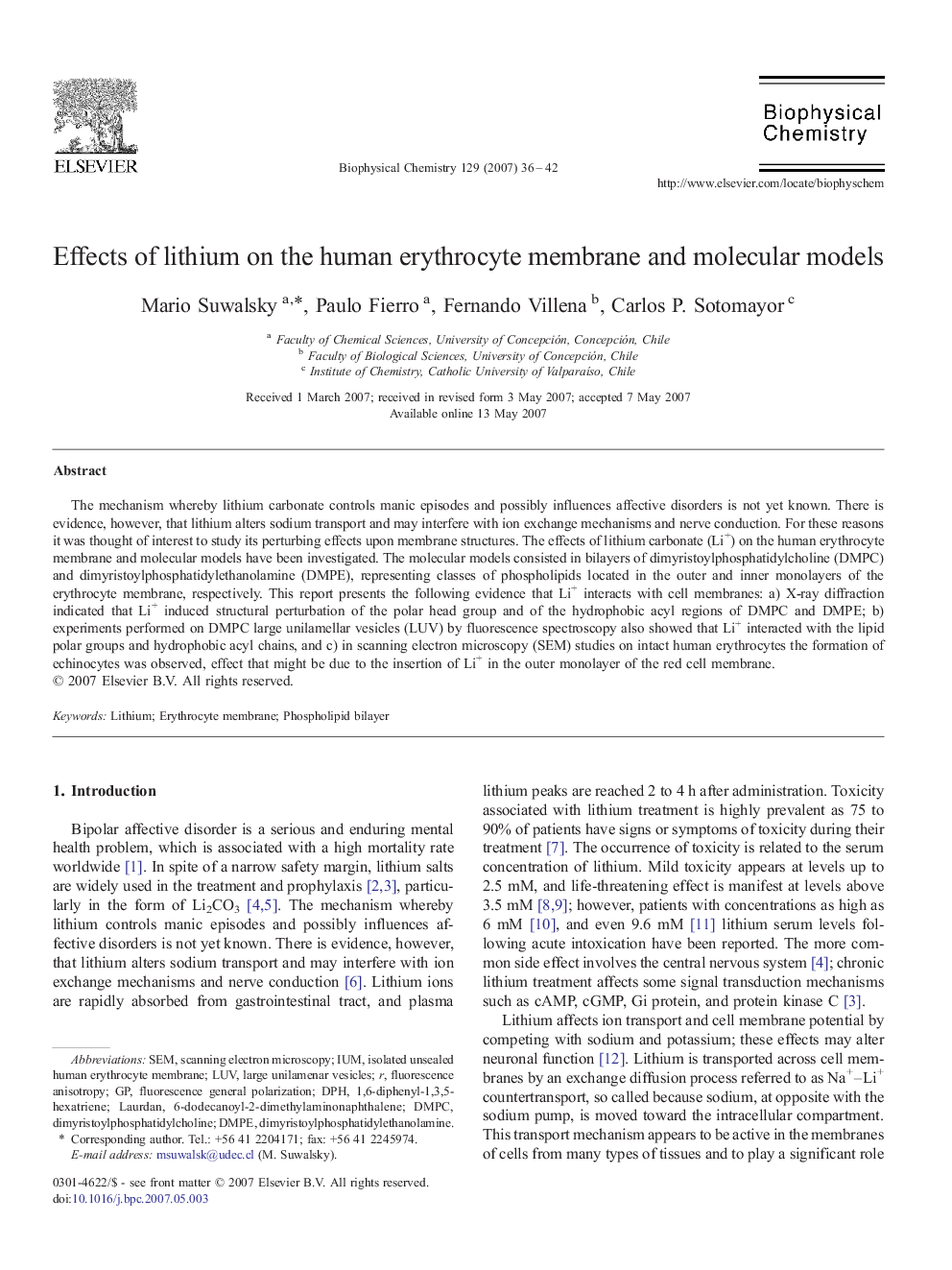| کد مقاله | کد نشریه | سال انتشار | مقاله انگلیسی | نسخه تمام متن |
|---|---|---|---|---|
| 5372237 | 1388869 | 2007 | 7 صفحه PDF | دانلود رایگان |

The mechanism whereby lithium carbonate controls manic episodes and possibly influences affective disorders is not yet known. There is evidence, however, that lithium alters sodium transport and may interfere with ion exchange mechanisms and nerve conduction. For these reasons it was thought of interest to study its perturbing effects upon membrane structures. The effects of lithium carbonate (Li+) on the human erythrocyte membrane and molecular models have been investigated. The molecular models consisted in bilayers of dimyristoylphosphatidylcholine (DMPC) and dimyristoylphosphatidylethanolamine (DMPE), representing classes of phospholipids located in the outer and inner monolayers of the erythrocyte membrane, respectively. This report presents the following evidence that Li+ interacts with cell membranes: a) X-ray diffraction indicated that Li+ induced structural perturbation of the polar head group and of the hydrophobic acyl regions of DMPC and DMPE; b) experiments performed on DMPC large unilamellar vesicles (LUV) by fluorescence spectroscopy also showed that Li+ interacted with the lipid polar groups and hydrophobic acyl chains, and c) in scanning electron microscopy (SEM) studies on intact human erythrocytes the formation of echinocytes was observed, effect that might be due to the insertion of Li+ in the outer monolayer of the red cell membrane.
Journal: Biophysical Chemistry - Volume 129, Issue 1, August 2007, Pages 36-42